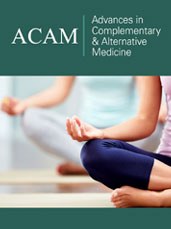- Submissions

Abstract
Advances in Complementary & Alternative medicine
Efficacy of Agnikarma in Instant Pain Management for Sciatica: A Therapeutic Approach
-
Open or CloseAshish H Mhatre*
D.Y. Patil deemed to be University Navi Mumbai, India
*Corresponding author:Ashish H Mhatre, D.Y. Patil deemed to be University Navi Mumbai, India
Submission: February 21, 2025;Published: March 20, 2025

ISSN: 2637-7802Volume8 Issue4
Abstract
Background: Low back pain, particularly sciatica, is a prevalent condition affecting 70-80% of the
population. Sciatica, characterized by radiating pain along the sciatic nerve, is often caused by herniated
discs and is associated with disability and increased healthcare costs. Ayurvedic treatments, including
Agnikarma, have been proposed as effective interventions for managing sciatica symptoms.
Objective: The primary aim of this study was to clinically evaluate the efficacy of Agnikarma, based on
Ayurvedic principles, in alleviating sciatica. Secondary objectives included examining potential untoward
effects of Agnikarma in patients with sciatica.
Materials and Methods: A single-arm open-label clinical study was conducted at Dr. D.Y. Patil College
of Ayurveda & Hospital, Navi Mumbai, with 50 participants. Patients with radiologically confirmed
disc herniation and lumbo-sacral radicular syndrome lasting 6-12 weeks were selected. Agnikarma
was performed using Rajat Shalaka (silver probe) for heat application on the affected area. The study
employed weekly assessments of pain (Visual Analogue Scale - VAS), Straight Leg Raise (SLR) test, and
other clinical parameters over 4 weeks.
Results: Statistically significant improvements were observed in pain reduction, range of motion (SLR),
and pain intensity (VAS scores). The student’s t-test and Wilcoxon signed-rank test revealed strong
positive effects of the treatment with p-values < 0.0001, confirming that the intervention effectively
reduced pain and improved mobility. No significant untoward effects were noted.
Discussion: Agnikarma showed promising results in the management of sciatica, with improvements
in pain relief and functional mobility. The treatment’s probable mode of action includes local heat
stimulation, which enhances blood circulation, promotes healing, and stimulates the body’s natural pain
relief mechanisms.
Conclusion: This study supports the effectiveness of Agnikarma in treating sciatica, with statistically
significant improvements in pain, mobility, and perceived pain intensity. Further research with larger
sample sizes and longer follow-up periods is warranted to confirm the long-term benefits of this
intervention.
Keywords:Sciatica; Agnikarma; Pain relief; Ayurvedic treatment; Visual analog scale; Straight leg raise test; Clinical study
 a Creative Commons Attribution 4.0 International License. Based on a work at www.crimsonpublishers.com.
Best viewed in
a Creative Commons Attribution 4.0 International License. Based on a work at www.crimsonpublishers.com.
Best viewed in 







.jpg)






























 Editorial Board Registrations
Editorial Board Registrations Submit your Article
Submit your Article Refer a Friend
Refer a Friend Advertise With Us
Advertise With Us
.jpg)






.jpg)














.bmp)
.jpg)
.png)
.jpg)










.jpg)






.png)

.png)



.png)






